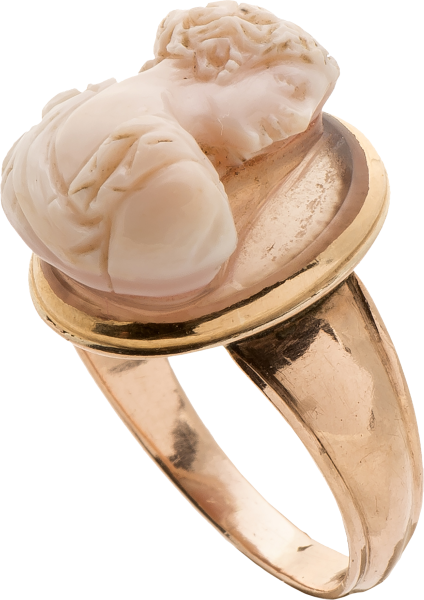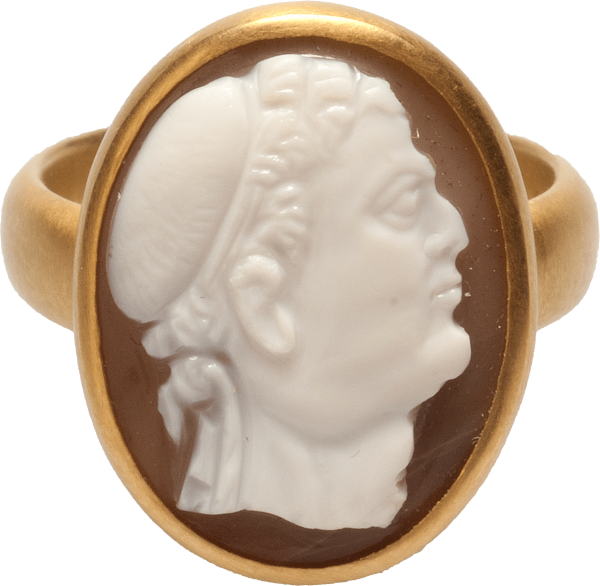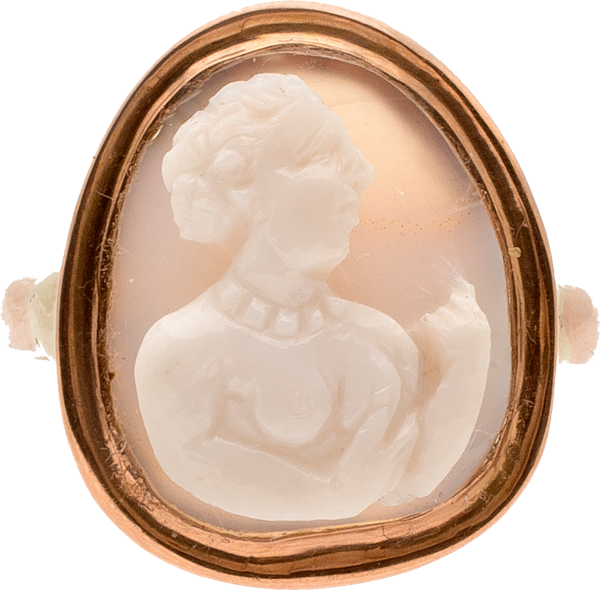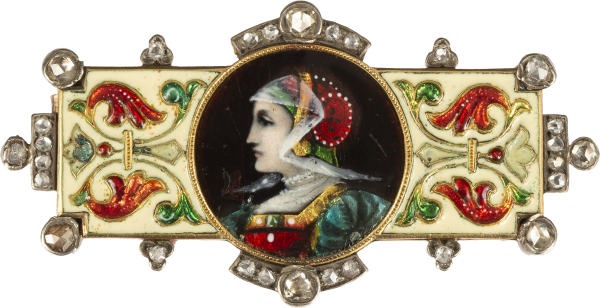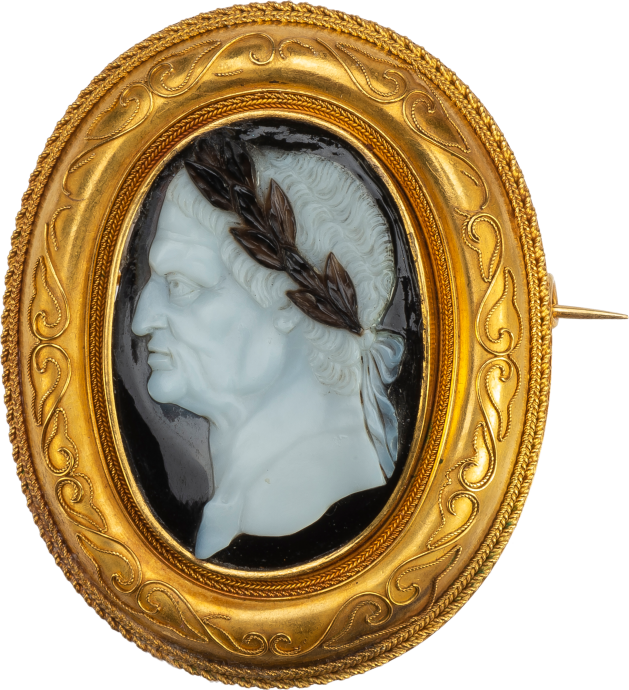


Portrait Cameo of Emperor Vespasian in a Gold Brooch
, Italy, c. 1600

Portrait Cameo of Emperor Vespasian in a Gold Brooch
Description
Three-layered agate cameo (black-white-black) with a laureate head of a Roman Emperor facing left. His white, cleanshaven head with wavy hair is set against a translucent black background and the laurel wreath cut in the black layer is tied at the nape of his neck with a white ribbon. The reverse side is convex. The collet-set cameo is inserted into a gold brooch with stylized foliage and frames of ornamental corded wires decorating the edges. The brooch is in excellent, wearable condition.
Literature:
The features of the Roman Emperor on the cameo suggest that it is Vespasian (9-79 CE). Coins minted during his lifetime depict him with a long and hooked nose, large and deep eye sockets, and a protruding chin. See, for example, a gold coin in the British Museum, London from 79 CE (inv. no. 1844,0425.1033). Marble busts of the period in the Louvre Museum, Paris (L1261) and Museo Archeologico Nazionale, Naples (inv. no. 6266) confirm the identification. During the Renaissance, portraits of Roman Emperors were fashionable. See an oval pendant with a painted medallion of Vespasian in the same pose in the Musée National de la Renaissance, Ecouen (ECL 22633). Cameos experienced a great revival during the nineteenth century. The brooch mount is in the Archeological Style of the 1860s to 1880s.
During the sixteenth and seventeenth centuries, Northern Italy was renowned for its gem cutters where this cameo was probably carved. For cameos from this period showing Vespasian, see examples in the Royal Collection, London (Piacenti-Aschengreen/Boardman, Modern and Ancient Gems and Jewels in the Collection of Her Majesty the Queen, 2008, no. 89); British Museum, London (Dalton, Catalogue of the Engraved Gems of the Post-Classical Periods, 1915, no. 332); and Staatliche Münzsammlung, Munich (Weber, Kostbare Steine: Die Gemmensammlung des Kurfürsten Johann Wilhelm von der Pfalz, 1992, no. 143). See also exh. cat. Splendeurs des Collections de Catherine II de Russie, 2000, no. 44/25.
J-35072

